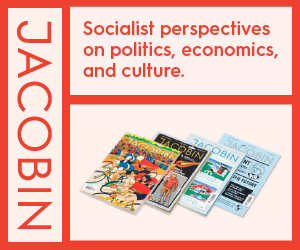Chileans for Free Education

The movement that erupted in chile in 2011 has maintained its strength into the 2013 academic year, and now the student leaders hold some decisive cards. In the last few months, on several separate occasions, supporters have taken to the streets in major cities by the hundreds of thousands in nationwide marches. As I write, 24 Chilean universities and 35 high schools are “en toma” or have at least an entire faculty on strike, and have declared an indefinite continuation of these occupations and demonstrations.
They are demanding free and quality education for all Chileans, claiming it as a universal social right. With elections just five months from now and campaigns well underway, the popularity and influence of the student movement have made it an inescapable concern for any presidential contender.
Former President Michelle Bachelet of the Socialist Party is the only likely candidate according to polls, and she is already looking for redemption from her first encounter with student mobilizations in 2006 known as the “March of the Penguins.” However, Andrés Fielbaum, President of the Student Federation of the University of Chile (FECh) and voice of the movement, has rejected her recent promise to implement free education by 2019. “What matter in politics are deeds and not promises,” Fielbaum says. “Such great offers come in electoral years, but we have seen that promises in electoral years mean very little.” (My translation.)
The “Maple Spring” in Québec emerged very much in parallel with what has been dubbed the “Chilean Winter,” temporally speaking. It could be the opportunity of upcoming elections in Chile that explains the revived movement activity this year, perhaps suggesting that next year its Canadian counterpart might reignite as well. If that is to be the case, then we to the north have a wonderful opportunity to learn from Chile and prepare to have our student issues be a top priority in the political campaigns that have already begun.
On the other hand, these two movements at opposite ends of the hemisphere seem to resonate at different frequencies. What is it about the circumstances in Chile that can explain such strong and resilient support for the students’ demands? How is the Chilean movement able to organize and orchestrate such pressure on the state on a national, and not just provincial, scale?
The answer is multifaceted, but primarily it has to do with the political history of Chile and the framing processes that the movement has carried out.
The evolution of leftist organizing in Chile
The student movement in Chile has built upon the foundations of leftist organizing in Chile, but it has also adapted to a changed political atmosphere where the traditional labour-union banner of the Left has been decimated or worse. The labour movement in Chile was most influential from the 1930s to the 1960s, reaching a climax with the democratic election of Socialist President Salvador Allende in 1970. Even then, when 80 per cent of education was provided publicly, students were nonetheless organized and demanding a democratized education that is free and accessible.
Military general Augusto Pinochet effectively muzzled and all but extinguished the movement after his golpe de estado in 1973 and during his repressive dictatorship that followed for the next 18 and a half years.
The Transición a la Democracía that began in 1989 continues into the present, as any democratic transition should. However, Pinochet’s legacy of capitalist and neoliberal economic reconstruction remains written in law in his Constitución of 1980. This and other persisting laws and decrees from his regime (see: LOCE, the “Organic Constitutional Education Law”) work to promote a society governed by a decentralized and unregulated market, encompassing not just education from high school onward, but other social services like health care and social security as well.
There is a collective memory in Chile that can be seen and felt in the most recent student marches, of a time when the civil rights of individuals had no place in the market. That is because they were understood as civil rights, not to be bought or sold. Now, after a brutal dictatorship and a period of extensive economic restructuration, and after 24 years of transitional democracy, students have found themselves the most popular in the political playground. That is not to say that the student movement has supplanted labour-union organizing by any means. It is to suggest that the political identity of the Left has found a new popular banner behind which to exert laudable force. That banner and framework seem to read “anti-neoliberal,” in whatever the language. In a very literal sense, the writing is on the walls.
New wine in new bottles: the political face of Chilean youth
The student movement in Chile has been the catalyst for an interesting spin-off. The 2011 leaders of a few major student federations have now started campaigns to become diputados/as (deputies) of parliament in the upcoming elections. Familiar faces like Camila Vallejo, Giorgio Jackson and Francisco Figueroa have committed themselves to driving the change through conventional political channels. Jackson founded the new Revolución Democratica party in January of 2012, and is running in the district of Santiago Centro.
Meanwhile, current leaders are on the front lines, voting amongst themselves on the legitimacy of the current occupations, and rallying supporters for another national march on June 13. The interruptions of classes in 2011 cost thousands of students their academic year (and its tuition). They run this risk again if things continue too long, but that is to presume that the situation is not addressed in their favour this November.
The period of democratic transition has shaped a political landscape of many voices and parties, and it has generally been the case that the most popular coalition wins the race. If there is a key that the Chilean students hold, it will be their ability to transform their protests and mobilizations from grassroots to effective structural change, and the elections are a perfect political opportunity.
Fielbaum has recognized this opportunity on behalf of the student movement through several interviews with news sources. Under the anti-neoliberal banner, this year there has seen a great deal of inter-movement support. The March for the Recuperation and Defense of Water on April 22 and the Labour March on May 1 were both explicitly supported by FECh and associated federations and exemplify the resonance of the anti-neoliberal master framework.
The diffusion effect: What can Chile do for Canada?
In Ottawa on May 30 of this year, Stephen Harper met with the president of Chile, Sebastián Piñera, who is restricted from serving a consecutive term.
They discussed and renewed the Canada–Chile Free Trade Agreement (CCFTA) and the Strategic Partnership Framework that emphasize further trade liberalization and education partnerships among their priorities. Remarkably, neither leader made any mention about the levels of discontent held among students in both countries with profiteering in the education system.
As the political leaders of both countries see it, the relationship between Canada and Chile is “business- as-usual,” even when Piñera will not be around to follow such agreements through. On the bright side, 40 Chilean students will attend Canadian high schools later this year through the Penguins Without Borders program, paid for by the Chilean government. Still, these students will be chosen based on the highly controversial SIMCE test (Education Quality Measurement System) that tends to favour students of wealthy backgrounds.
The traditional channels for political change remain quite unresponsive to the student cause in most of Canada. The resonance of messages like “freeze the fees” and others that fight tuition hikes has also been low in comparison with Chile. That might be because fighting tuition hikes does not promote the kind of structural change that is seen as necessary by potential supporters. In other words, an end of tuition hikes does not mean an end of tuition, nor would it lead to an end of student debt.
By contrast, the anti-neoliberal master framework has been taken up in Chile with much greater popularity in what can be compared to a high-stakes poker game. Claiming education as a universal social right and denying it as a commodity to be bought and sold puts the students “all in.” By identifying the state as responsible for providing social services and protecting them from foreign market forces, the anti-neoliberal banner embodies the demands of not just the student movement, but also Indigenous, environmental and labour movements as well. It is hence the new face of leftist organizing in Chile and students lead the way.
Should the “Maple Spring” see a revival as we approach national elections here in Canada in 2015, the successes (and blunders) of the Chilean case should be considered in earnest. There is a commonality among the issues addressed by movements like Idle No More, the environmental movement and the labour movement in Canada. That commonality is the lack of regulation and active deregulation of the market to promote heavy-hitting capitalism and foreign investment.
While these Canadian movements differ in their specificities, as they do in Chile, our southern comrades are demonstrating the force that a new political identity can have upon the state if framed in a resonant way.
Nevertheless, Canada does not have the same collective memory of an education system that is universally free. Nor do we have a political history of repression that can be compared to Chile, and perhaps this explains the common stereotype of Canadian complacency in politics. Then again, our electoral opportunity has yet to come, but it will be just as important to mobilize under a common banner if we intend to depose Harper, if not even more so, since it is likely that he will attempt to linger for another term as prime minister.
There is plenty of time to have the anti-neoliberal frame amplified in order to resonate with other sectors and regions of Canadian society, but also plenty of work to be done. It is only a question of how and when this process is to begin.
This article appeared in the September/October 2013 issue of Canadian Dimension (Networked Dissent).










